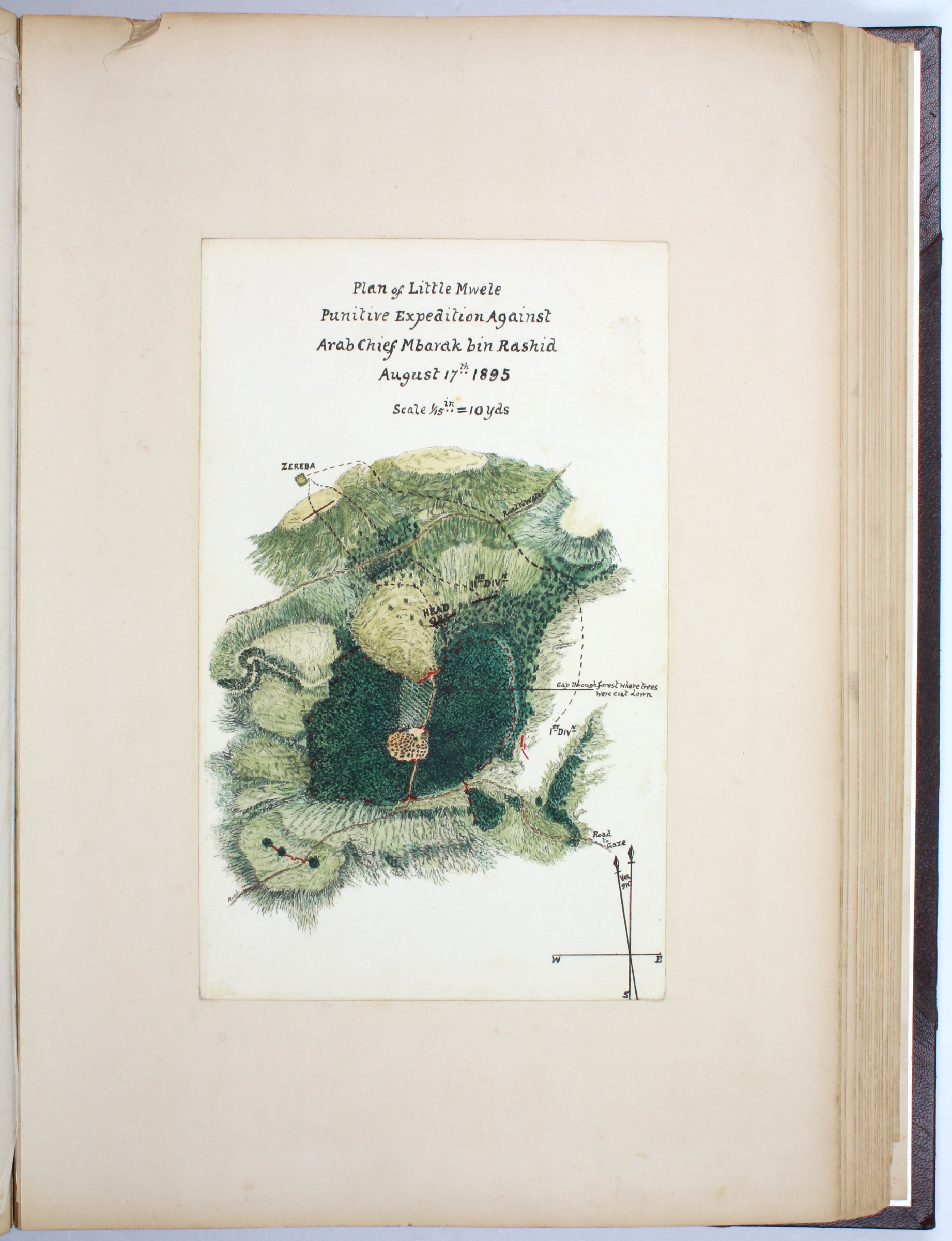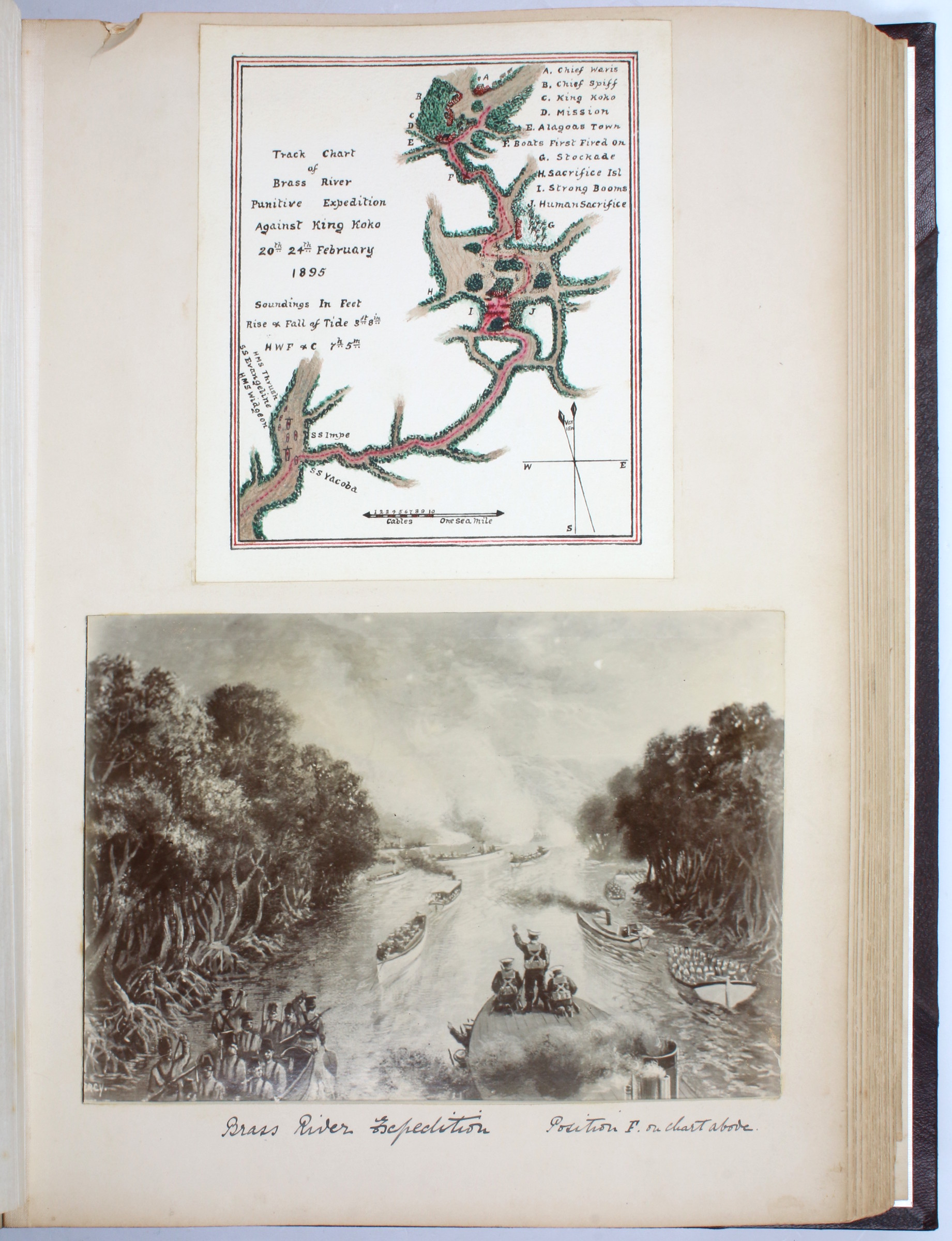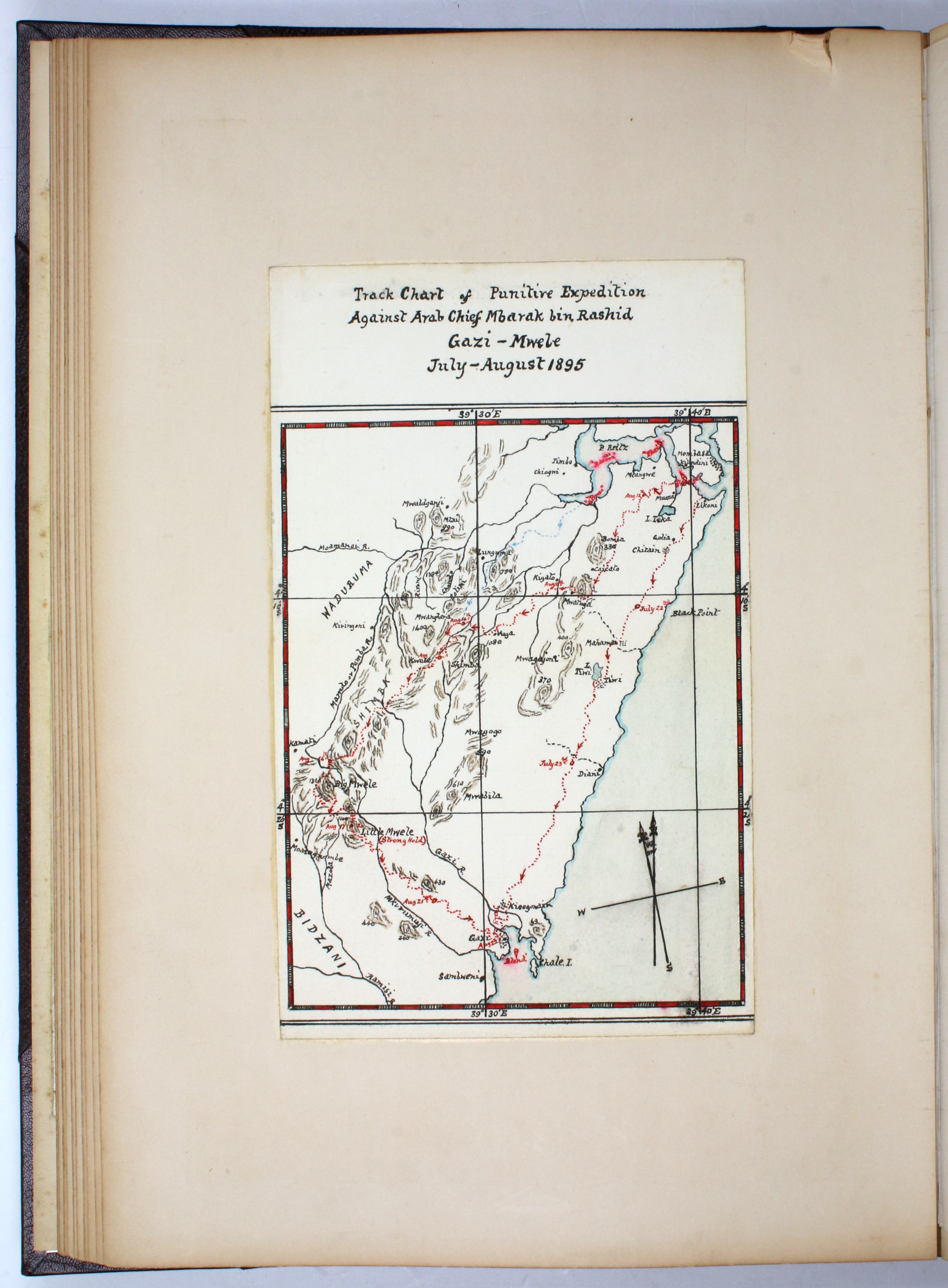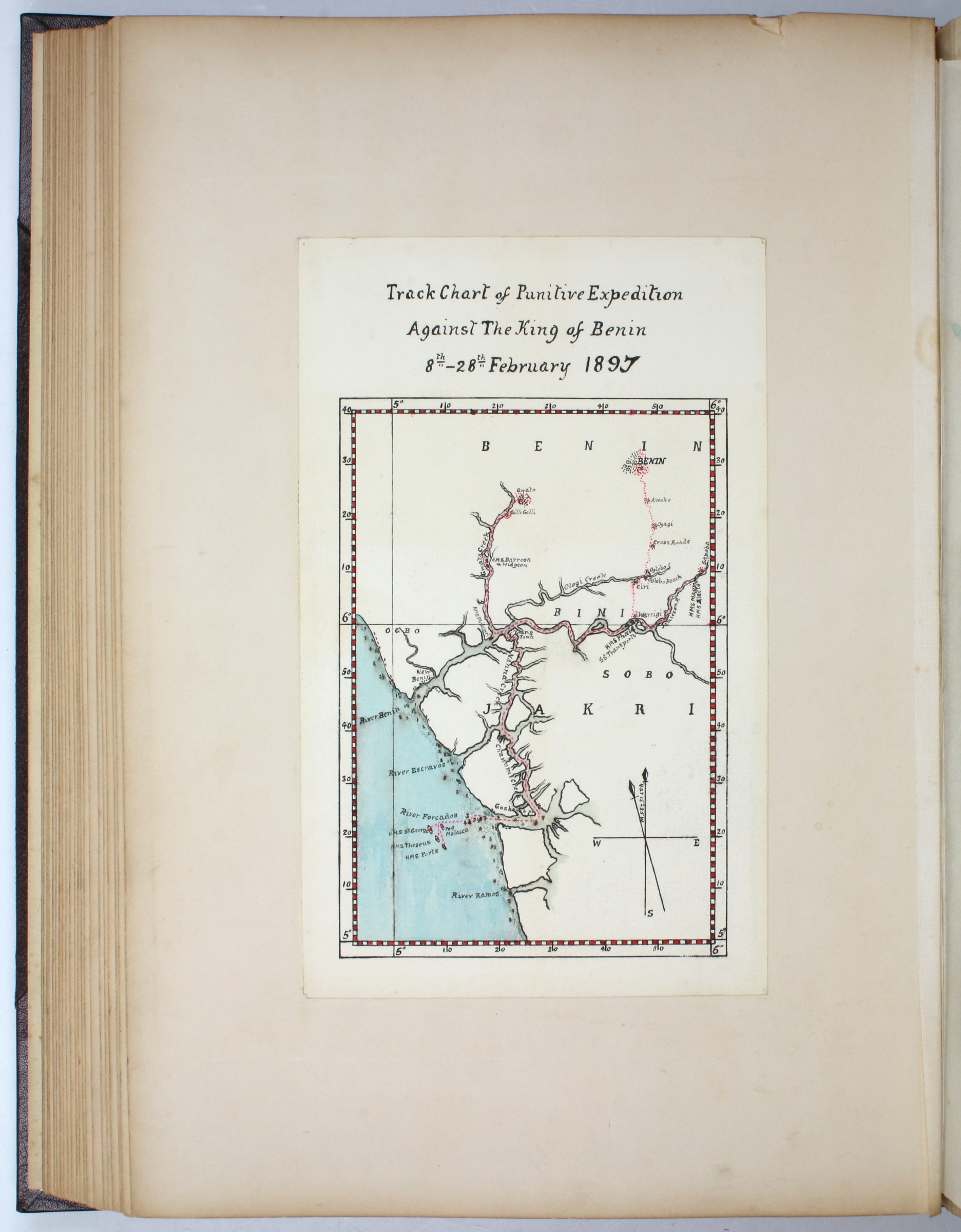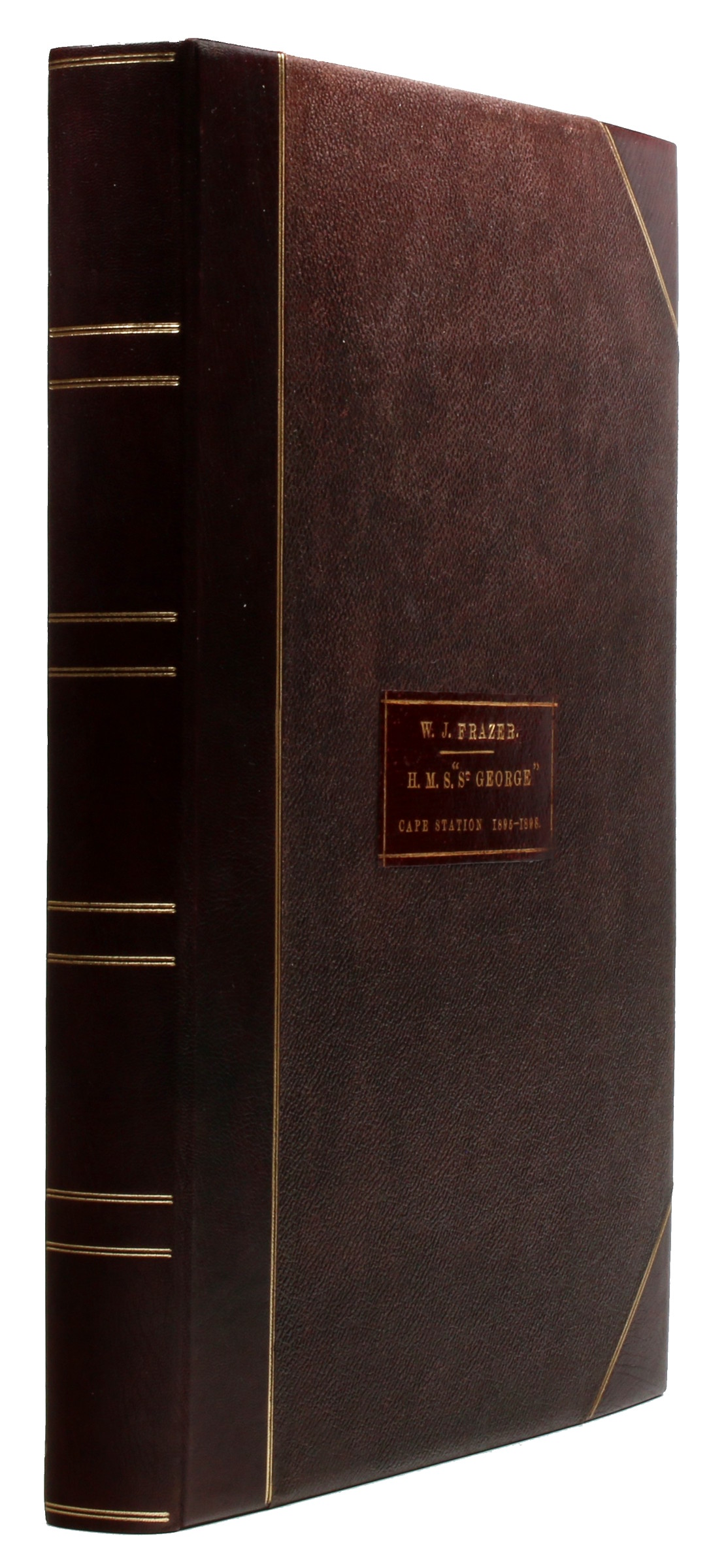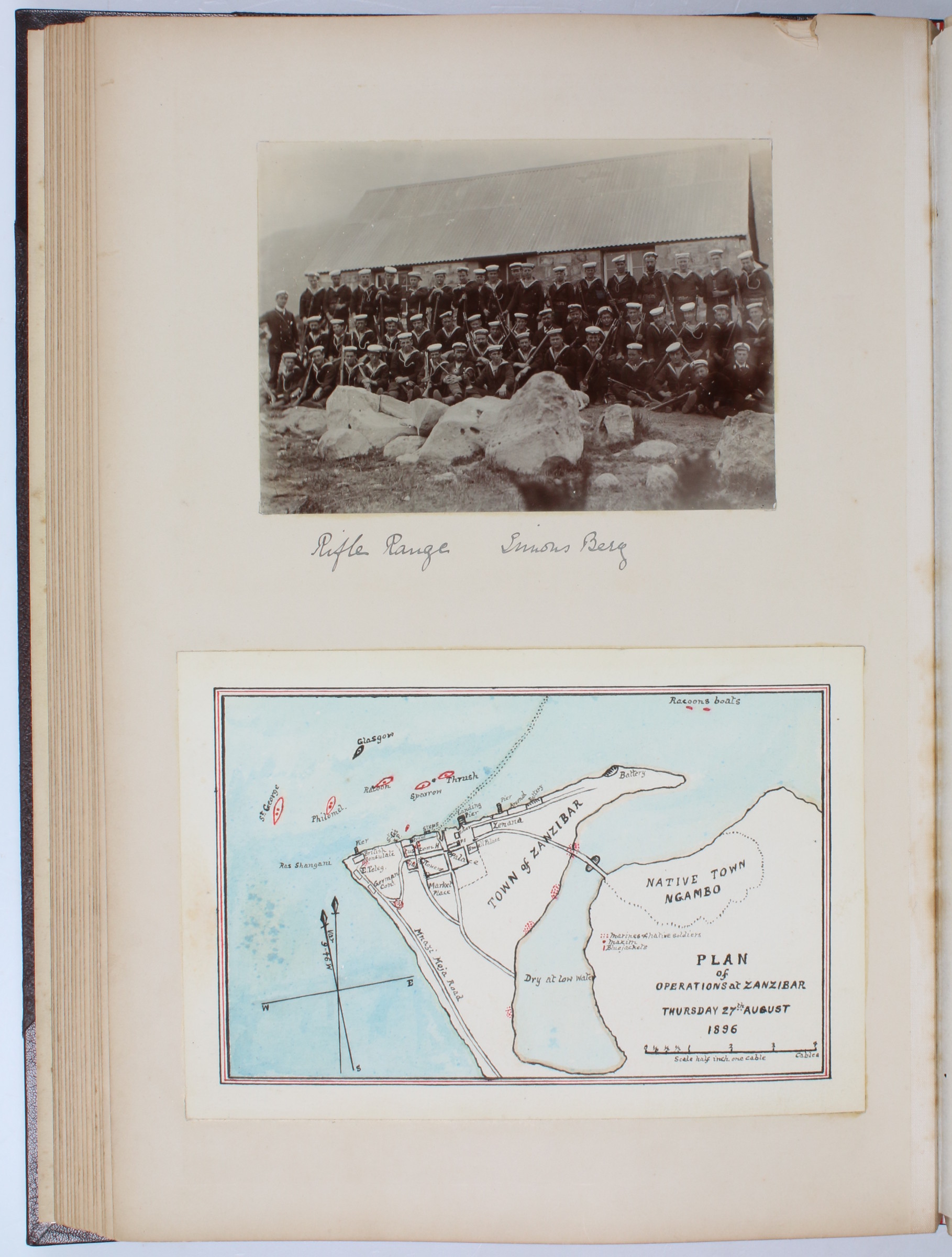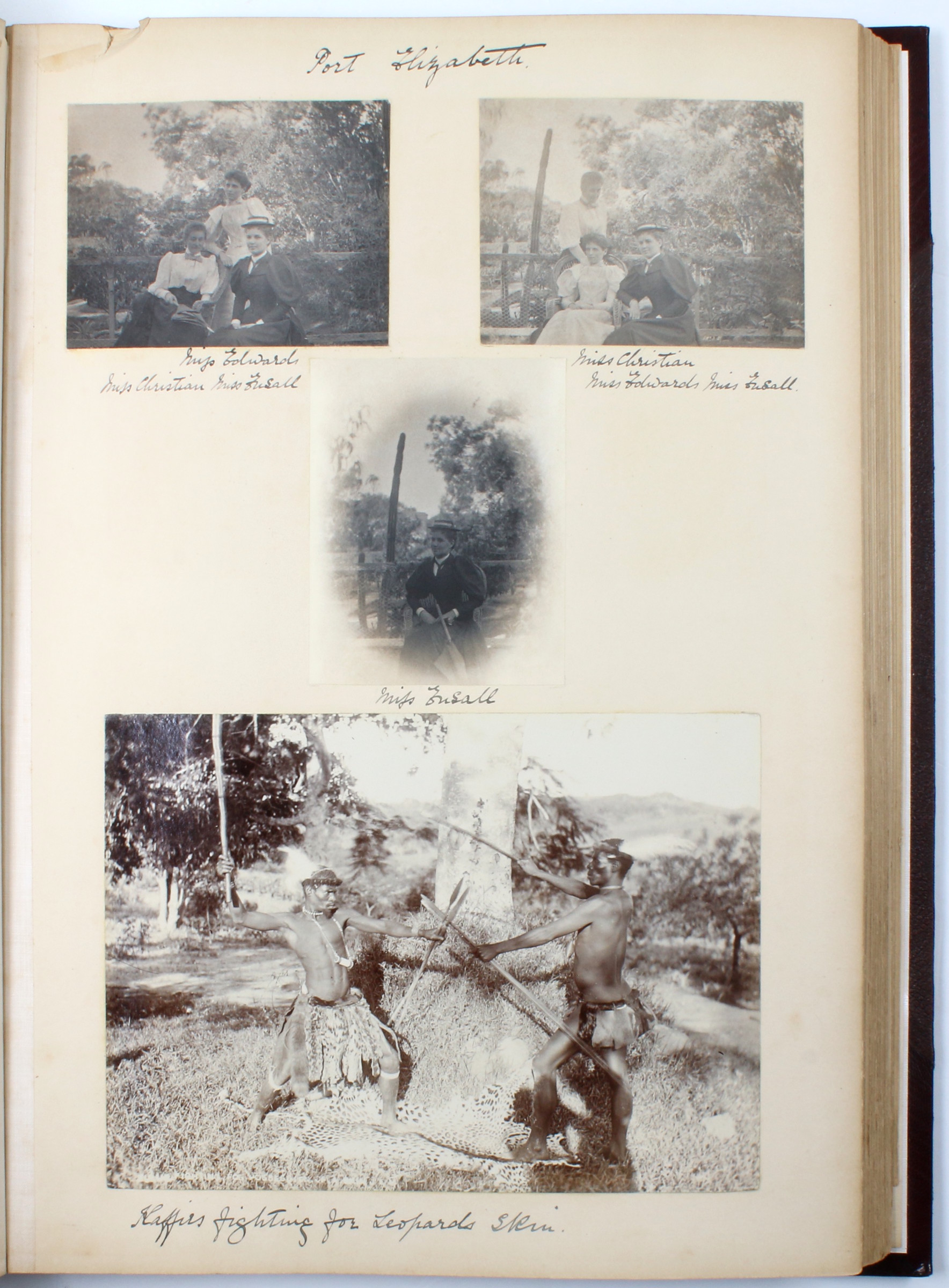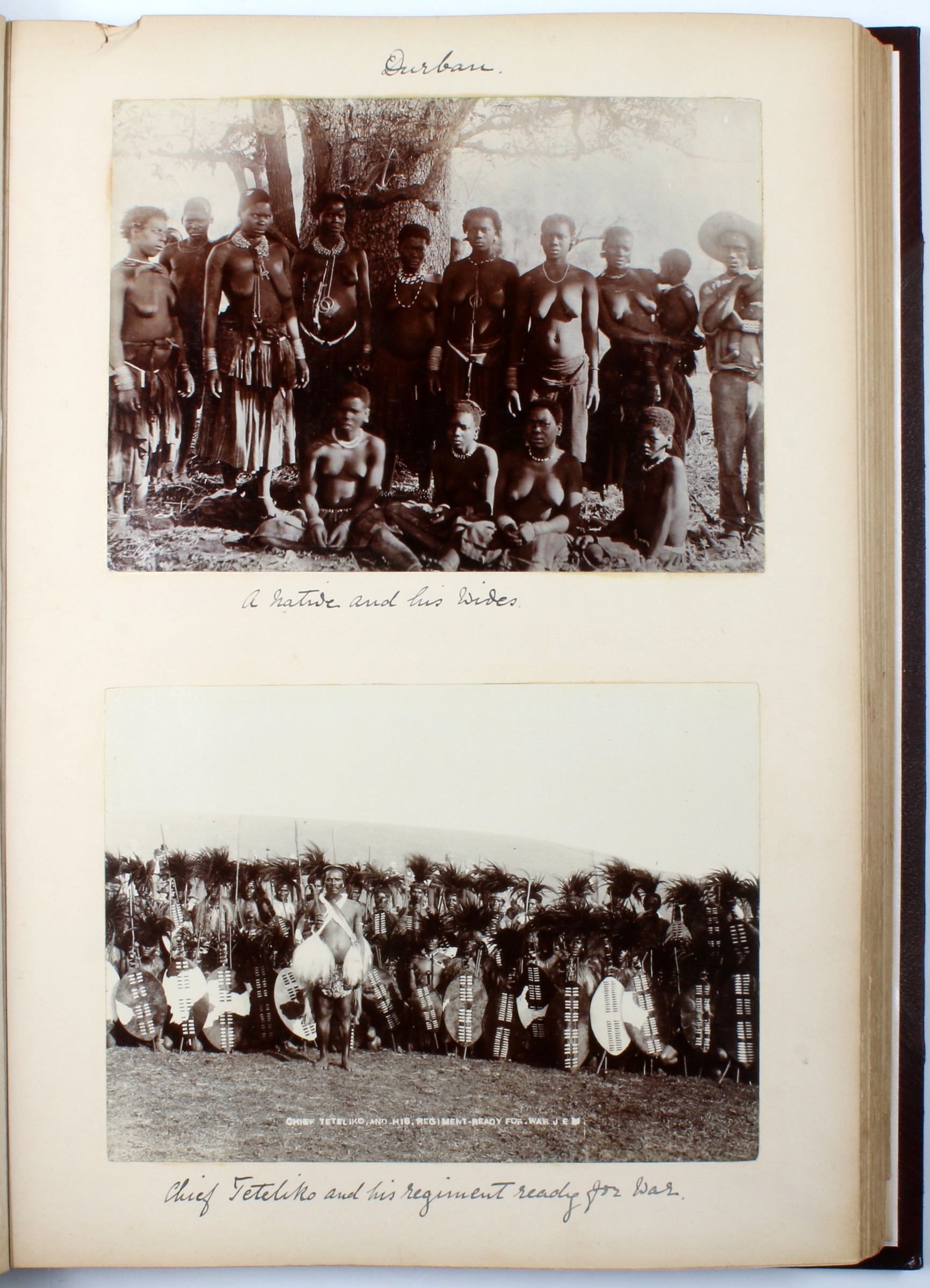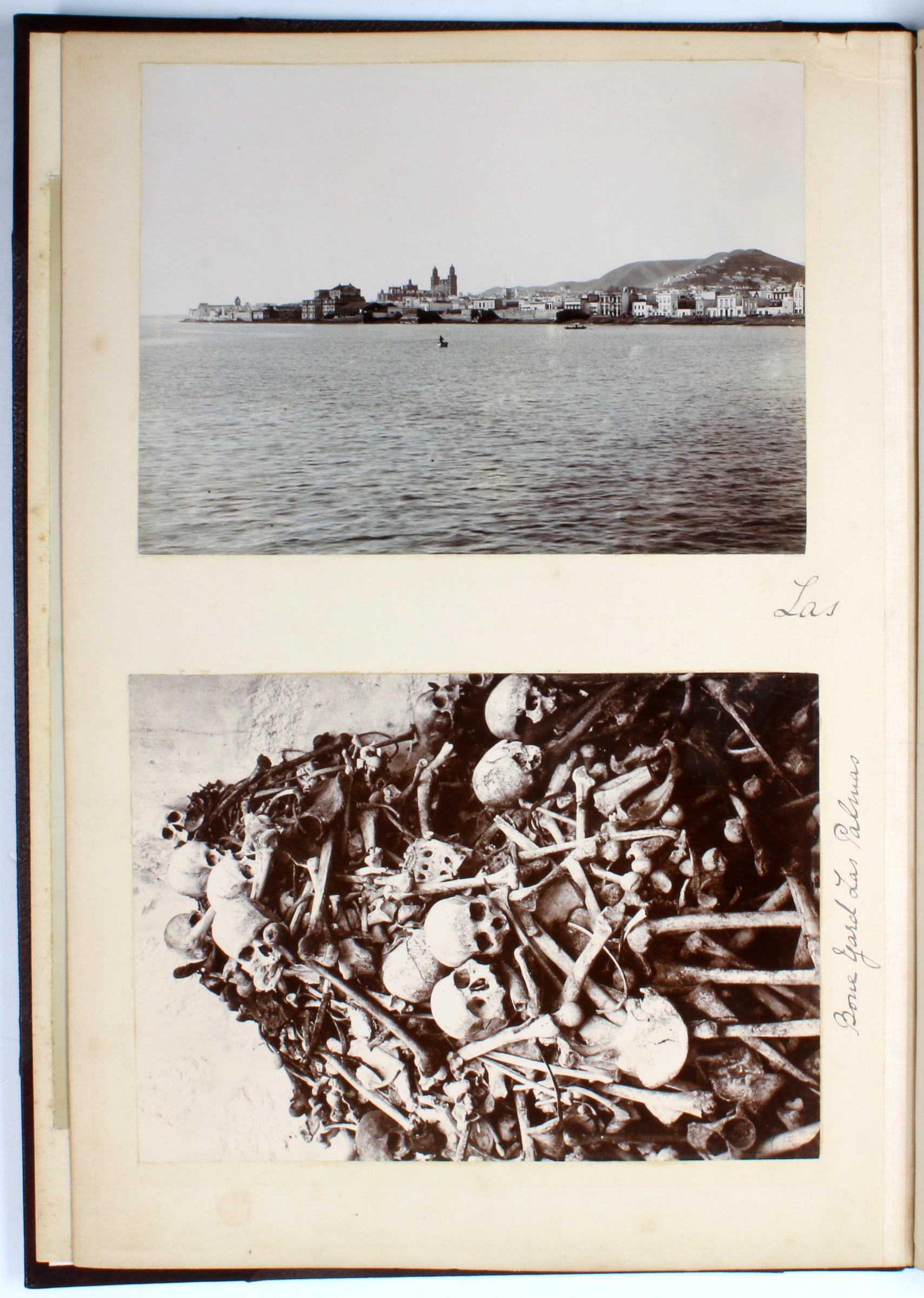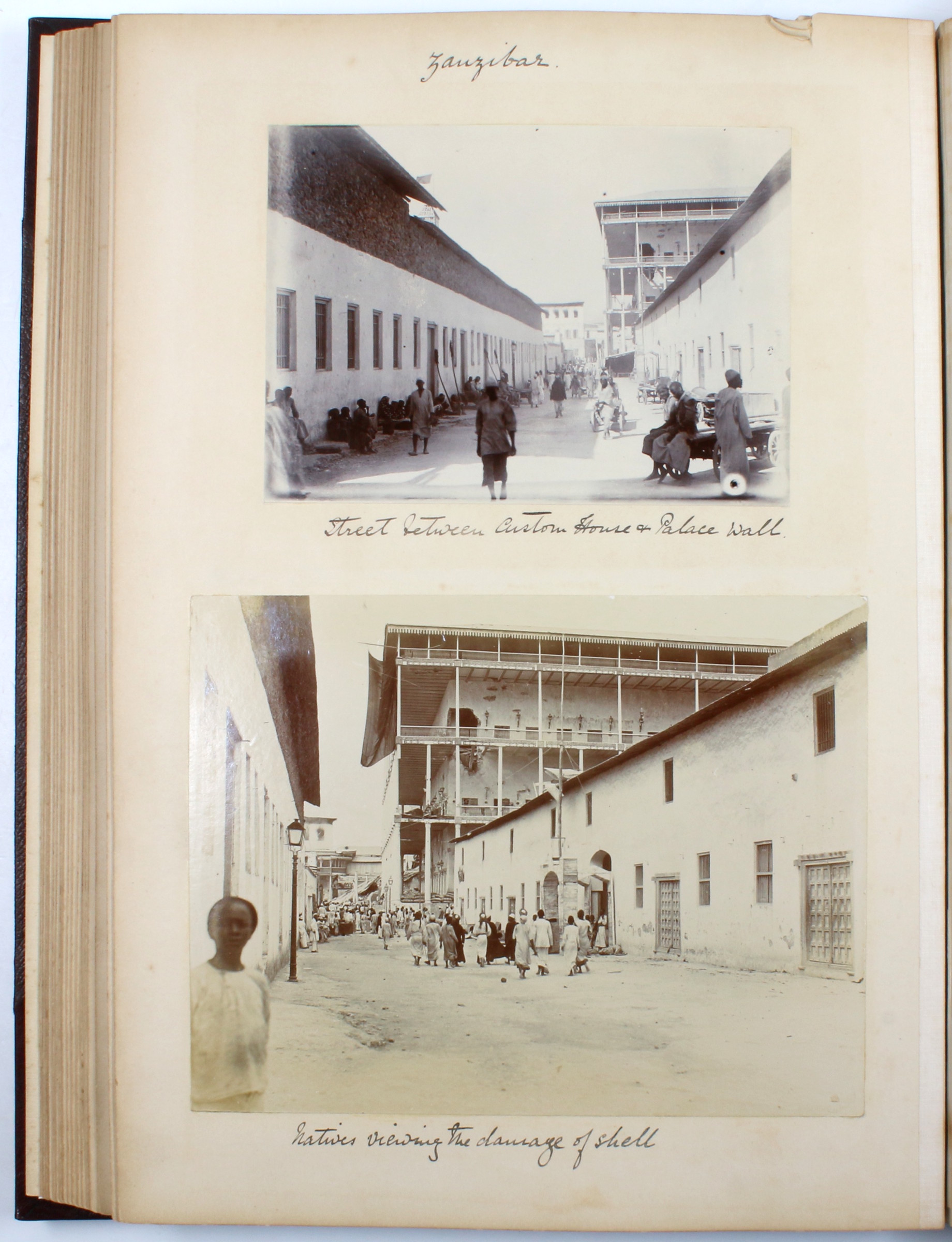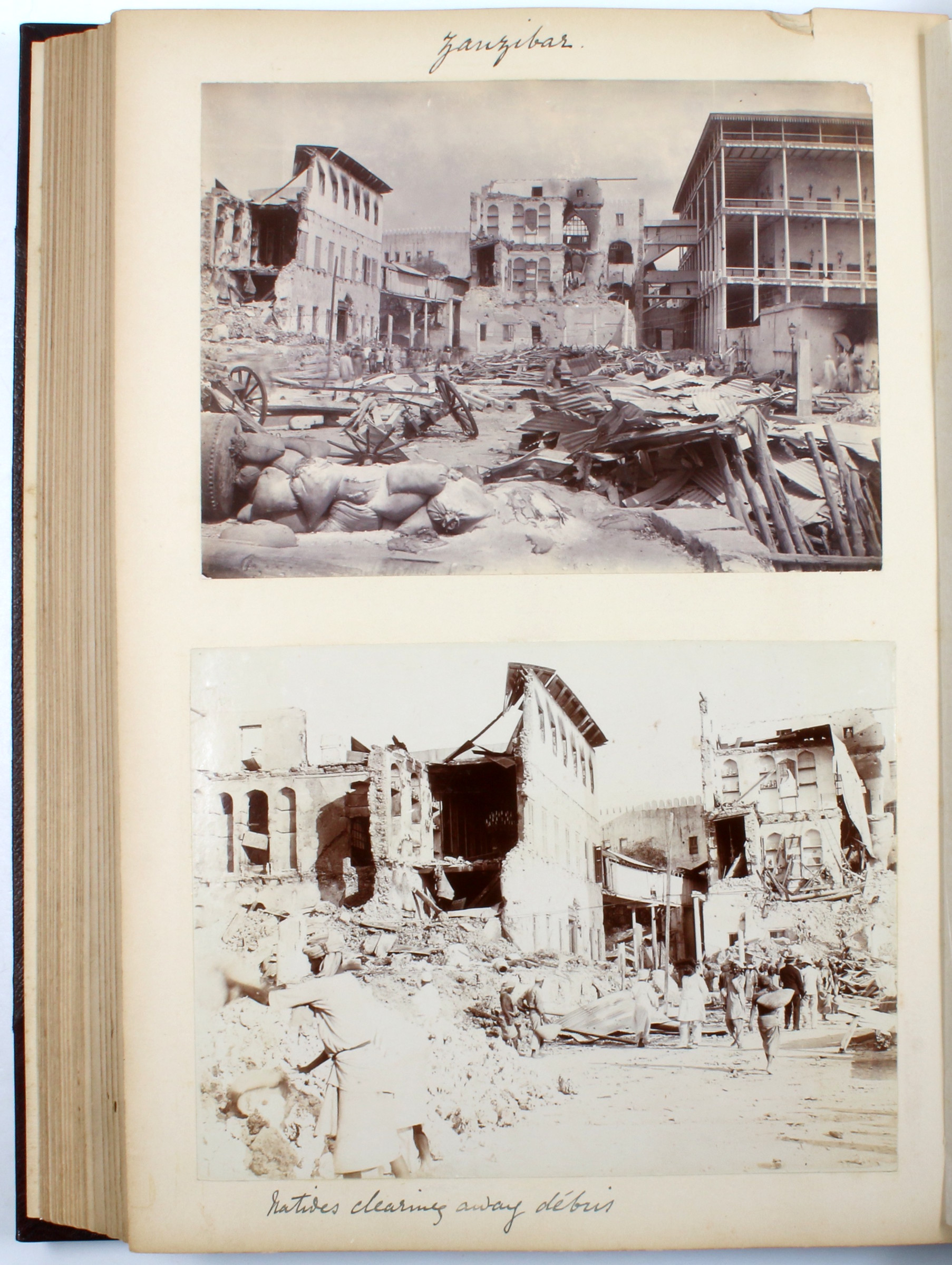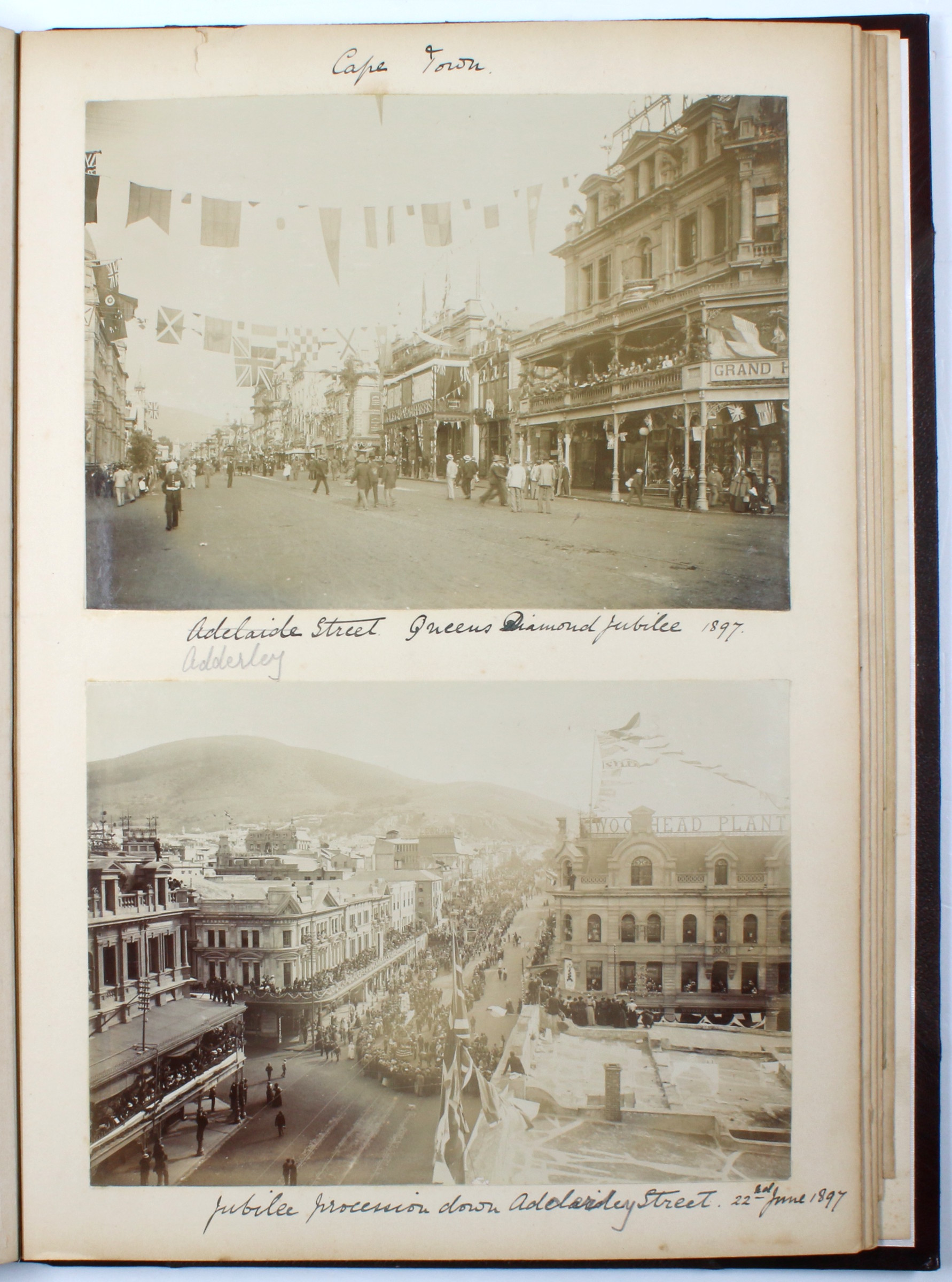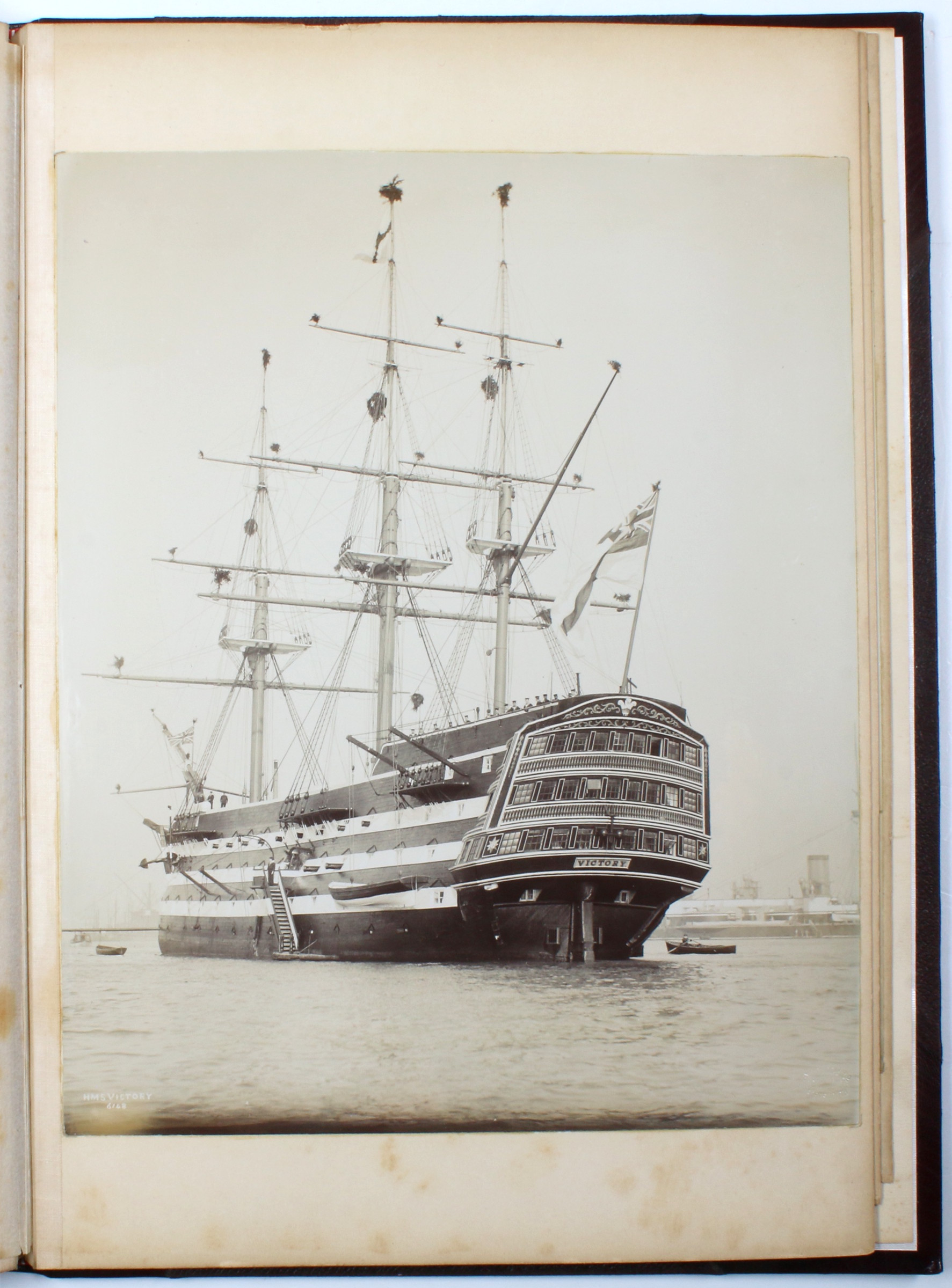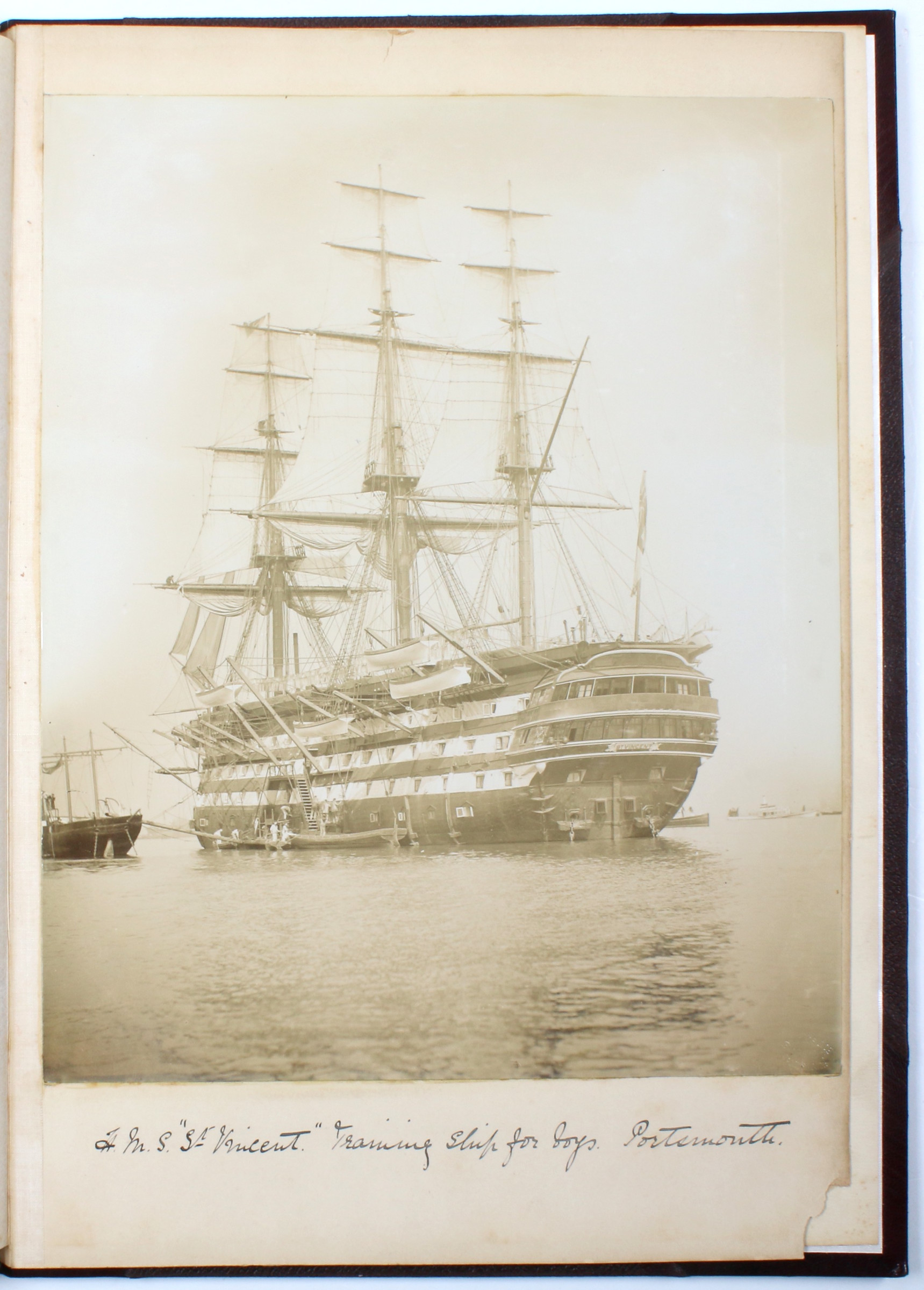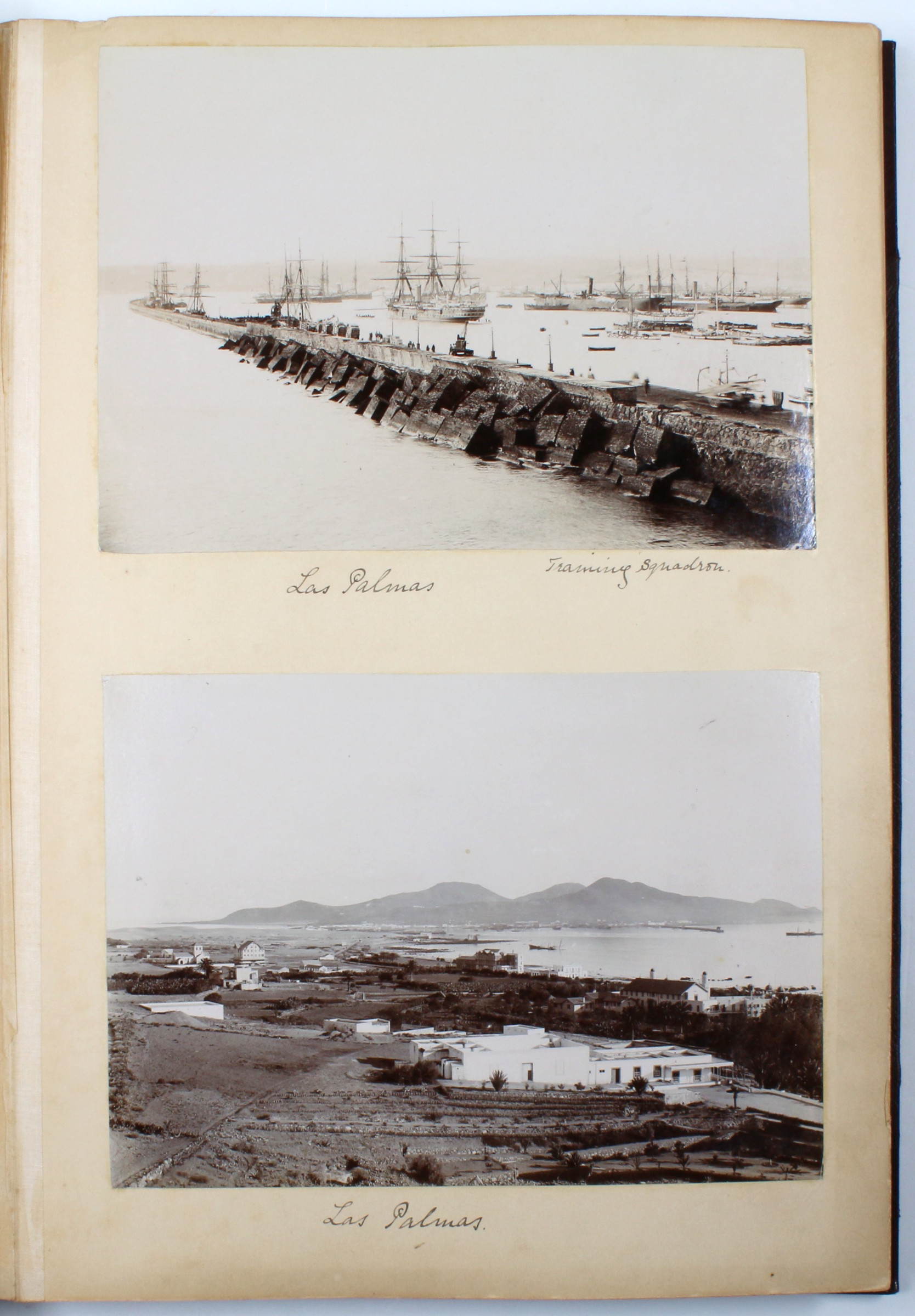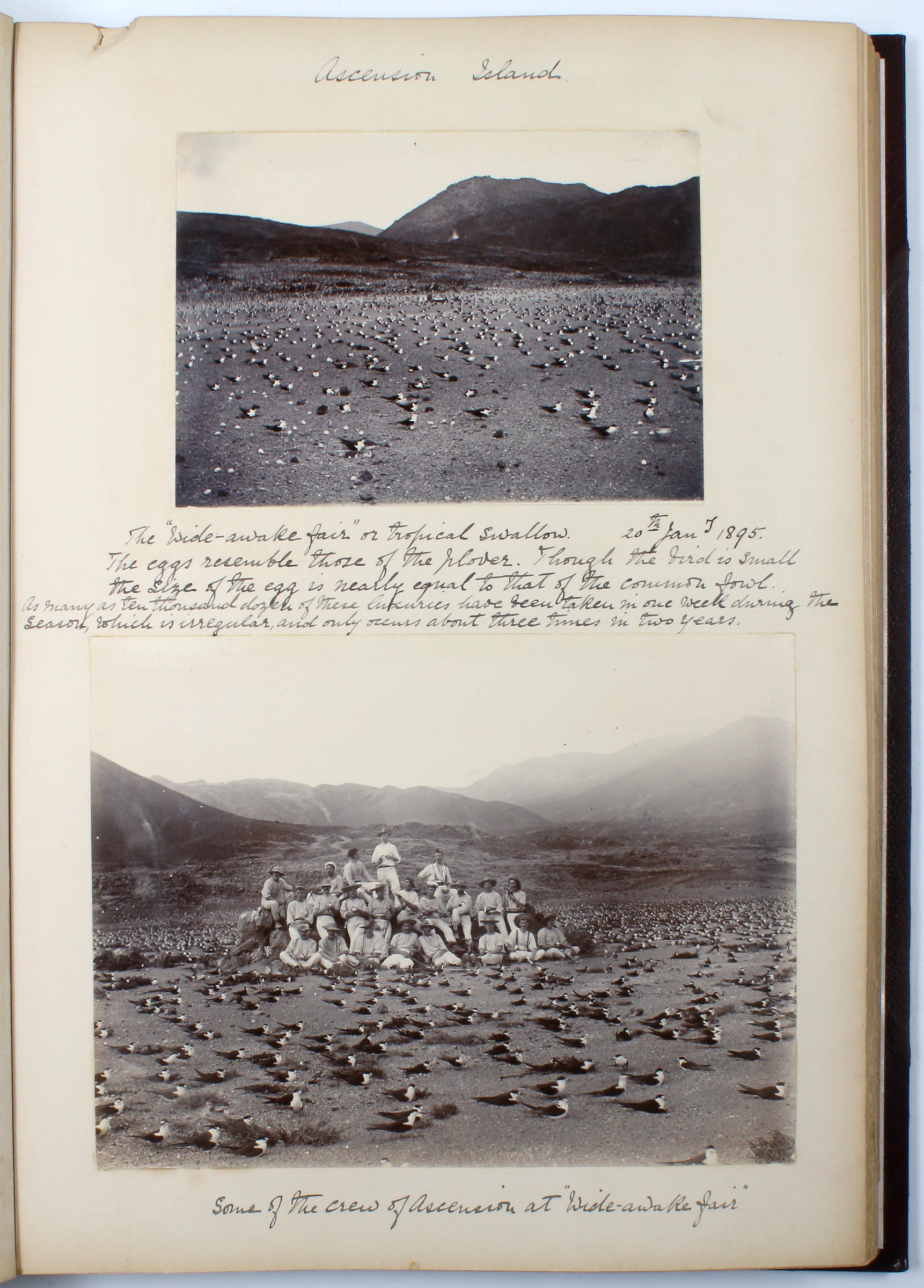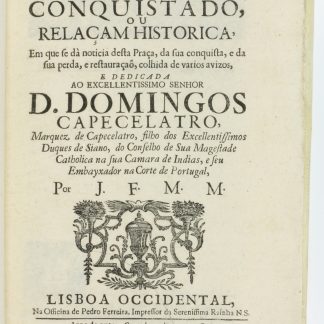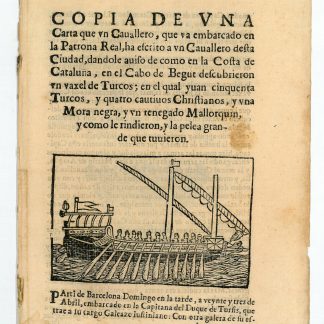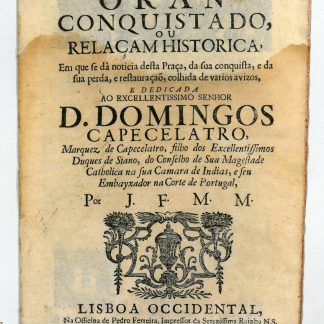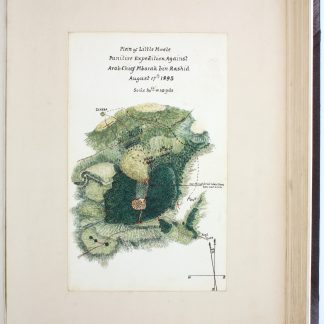First-hand photographic record of British military operations in Arab-ruled East Africa and in Benin
Photographic album of W. J. Frazer of H.M.S. "St George" of the Anglo-Zanzibar War.
Folio (270 x 380 mm). 30 ff. 120 albumen photographs and 6 hand-drawn, hand-coloured battle maps, all captioned in an English hand and ranging from 207 x 290 mm to 65 x 90 mm. 20th century half brown leather and pebbled cloth, with original red morocco label titled in gilt.
€ 32.000,00
The British Scramble for Africa in hand-drawn military maps and personal photographs, including original documentation of the Mwele Punitive Campaign (1895, fought against the Omani Arab insurgent Mbarak bin Rashid al-Mazrui), the Anglo-Zanzibar War (1896, waged against the Omani Arab Sultan of Zanzibar, Khalid bin Barghash), and the Benin Punitive Campaign (1897, against the King of Benin, Ovonramwen Nogbaisi).
The compiler of the album was the British Royal Navy Lieutenant William J. Frazer, whose camera was eyewitness to the bombardment of the Sultan's palace in the forty-minute Anglo-Zanzibar War as well as the sack of Benin City and the looting of the famous Benin bronzes. Crucially, Frazer's album includes six original hand-painted maps of these and other British operations in Africa; they comprise a vital primary source of British actions, the details of which remain hotly debated. As Frazer was awarded a medal for capturing a standard in Mwele, one can be certain he witnessed events personally. His battle maps are important sources that add to our knowledge not only of the better-known Zanzibar and Benin campaigns, but also of those against King Koko and Mbarak bin Rashid, on which scholarship is still more limited. Indeed, Mbarak bin Rashid played an important role in the history of Arab-ruled "British East Africa" (present-day Kenya). Rivals to the powerful Al-Busa'id dynasty that ruled over Zanzibar, the Al-Mazrui clan had been ousted from Mombasa in 1837 but held out in other coastal towns. In the early 1880s they threatened regional stability by subduing tribes who had previously acknowledged the authority of Sultan Barghash bin Sa'id and by refusing to recognize local rulers appointed by the Imperial British East Africa Company. In response, British and British-trained Al-Busa'idi soldiers launched a punitive expedition that razed Mbarak bin Rashid's Mwele stronghold in the Shimba Hills forest.
There are several points of interest on Frazer's maps of the Benin expedition as well. Though his 1895 Brass River Expedition map carefully marks the location of human sacrifices, the 1897 Benin map does not, and instead marks a series of violent encounters on the way to Benin and Gwato. Frazer includes a detailed map of the British encampment in Benin City, down to the placement of guns and the spare ammunition storage in the back of a Ju-ju hut; photos of the encampment complement the sketch.
The extensive album includes a few commercial photographs, but is largely composed of original photography. This includes snapshots of the looted Benin antiquities, including two memorial heads of Benin kings identifiable as two of those recently in the Museum am Rothenbaum, Hamburg, and slated to be returned to Nigeria, and a carved elephant tusk. One photograph shows a rare instance of a Benin 'bronze' in situ, captioned "Ju-ju outside of hut in Benin City".
The photos of the aftermath of the Zanzibar bombardment are also striking: British sailors calmly inspect the corpses of the Zanzibar civilian casualties under the bombed-out Sultan's palace. The Omani Arab dynasty of the Al-Busa'ids ruled Zanzibar; Sayyid Hamad bin Thuwaini Al-Busa'id (1857-96), fifth Sultan of Zanzibar, was the grandson of Said ibn Sultan (1790-1856). Hamad was probably poisoned by his cousin Khalid bin Barghash, whose seizure of power in 1896 was exactly what prompted the British bombardment captured here.
Altogether, a visceral and original contribution to the record of British-Arab and British-African military conflicts, and an important first-hand record.
From the collection of the U.S. conservationist Esmond Bradley Martin (1941-2018), long a U.N. special envoy for the conservation of rhinoceros.
Some leaves chipped or bumped, not generally affecting the images; a few instances of light fading, altogether in excellent condition.

